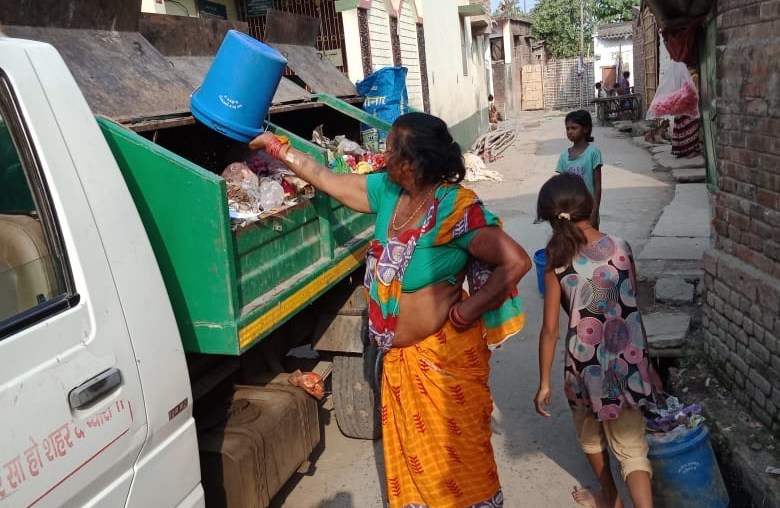Swati Singh Sambyal is a specialist in municipal waste management and environmental governance at the Center for Science and Environment in New Delhi.
NEW DELHI — India produces 62 million tons of waste per year — the same amount as all of sub-Saharan Africa. That’s nearly 170,000 tons of waste per day. It would be apt to say that India’s cities are drowning in their own garbage.
The government has stepped in on occasion with clean-up programs to combat overwhelming urban waste. But we need more. Our cities need systems that address issues beyond visible cleanliness.
Why is waste management such a challenge in the fastest-growing economy on the globe? First, waste is not traditionally separated out at the source — meaning in our homes, offices or businesses, before it goes into a collection bin. Second, most of our cities depend on capital-intensive models of waste management, with about 60 percent of municipal spending going toward collection and transportation, leaving few funds for managing the waste itself. Last, in the majority of Indian cities, there are no formal mechanisms for processing and disposal. This means trash is dumped — anywhere and everywhere.
To build better cities and societies, waste management therefore needs to be completely reinvented. And to do this, we need to understand the composition of our waste itself.
In the high-income West, studies show waste is comprised of 28 percent biodegradable (materials that break down and decompose as compost), 54 percent recyclable (materials that can be remelted, shredded or otherwise chemically changed and repurposed) and about 18 percent inert (materials that do not break down and decompose, such as cement or the nonrecyclable plastics of appliances). In contrast, the composition of waste in the global South is 64 percent biodegradable, 19 percent recyclable and 17 percent inert.
We need to understand that this composition decides technology and methodology. In India, as well as in much of the global South, processes such as composting and biomethanation (in which waste is transformed into biogas, which can be used to power machinery and generate electricity) are more viable and sustainable, given the larger percentage of biodegradable waste. We need to get rid of our city landfills if we want to see a difference.
City of Alappuzha
Alappuzha, a small coastal city in India’s southern Kerala state, has shown us just how feasible a zero-landfill city model is. It took years of protests by local village communities to push the municipality to close the dump yard, situated about seven miles from the city. Once a high court order shuttered the site in 2012, the city’s streets and waterways became choked with garbage. But the city decided this landfill would be its last, earning recognition from the United Nations in 2017 as one of five cities in the world effectively combatting waste.
Today, solid waste in Alappuzha is segregated at the source. Instead of moving piles of trash to a dumpsite, the wet waste is composted in local plants and a significant amount is processed into biogas for cooking, while the dry waste is channeled to recyclers.
As a result, the city has not had to invest in a waste collection system for the past several years. Rather, it has put the onus of waste management on its residents: “You generate the waste, it’s your job to clean it up!” To encourage people to treat wet waste at the source, the local government also provides residents with subsidies of up to 90 percent of the cost of composting and recycling materials and equipment.
City of Muzaffarpur
Muzaffarpur, a city with a population of about half a million, was considered one of the dirtiest in Bihar state not long ago. Today, it’s on track to become one of the cleanest, following a pilot program with the Center for Science and Environment, a research and advocacy organization for which I work. Starting in 2016, we began replacing centralized landfills and dumpsites with a decentralized waste management system, in which small-scale processing centers handle segregated waste and dry recyclables.
There have been challenges along the way, including find the right balance between private and public players. For example, municipal trash collectors tend to be the weakest link in the waste management process and have to be incentivized to collect segregated waste by the extra money they receive from selling dry recyclable waste to the privately-owned recycling centers.
A year and a half into this project, the city has drastically changed. Thirty-four of the city’s 49 wards are segregating waste on site, and waste is being successfully processed in two centers, with several more planned. There has been a significant shift in the role of the municipality, whose responsibilities earlier were to merely collect and dump. The city aims to become zero-waste by December 2018.
Other cities follow suit
Because of interventions like this, the concept of zero waste through trash segregation and decentralized processing plants is thriving in Indian cities. Following the early successes of Muzaffarpur and Alappuzha, 13 cities in Bihar are slated to adopt the model. Cities in Kerala state, including the capital city Thiruvananthapuram, have joined in, as well as Ambikapur, Birgaon and Panaji.
In Vengurla in Maharashtra state, more than 90 percent of waste is effectively segregated at source. And it is one of the few cities that has been generating revenue from processing its waste — about $2,000 a month, enough to cover operation and maintenance costs of the city’s processing center, including salary for a staff of four-to-six workers. The city has banned plastics and pushed for lasting behavioral change by involving local community groups and partnering with nonprofits to raise awareness on the importance of zero waste.
The success of zero-waste programs in India’s cities proves that people desire a better future for our cities. Just concealing waste by dumping it out of sight a few miles further away or burning it in incineration plants are neither viable nor sustainable solutions for developing economies like India’s. Cities of the global South need to think globally, but act locally, and India is a model that emerging economies need to pay attention to.
There’s much more work to do. In principle, our challenges are the same. We need to look at investing in decentralized, cost-effective systems that support segregation. We need to focus more on social engineering, which will mean making strides not only in infrastructure and technology but also shifting social priorities and behaviors in our communities. We need to make waste management, just like brushing our teeth, a daily ritual, a necessary habit.
This was produced by The WorldPost, a partnership of the Berggruen Institute and The Washington Post.





